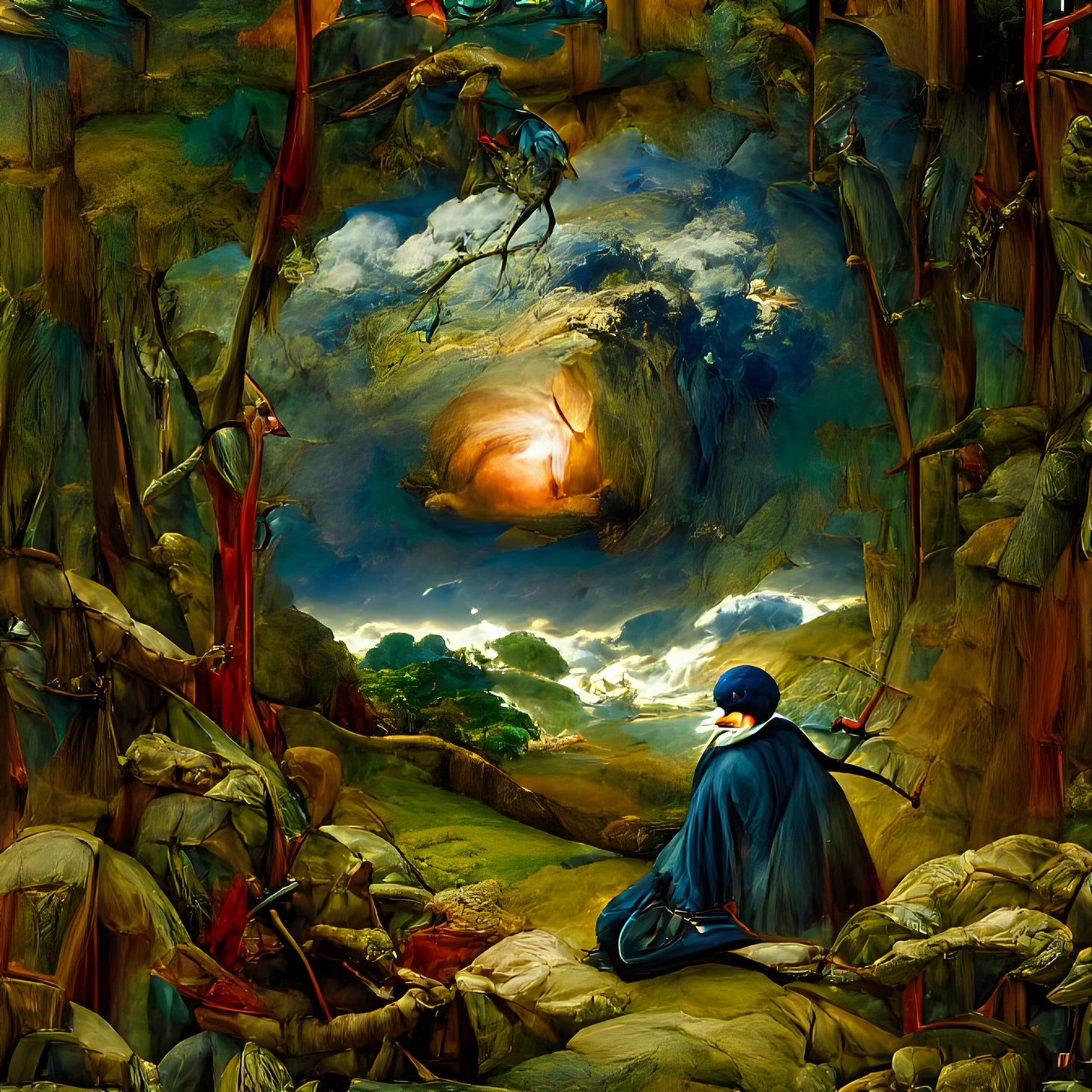The Art Crowd
Botto is a new 'decentralised autonomous artist'. What does it tell us about the future of the endless human quest for status?
Welcome to New World Same Humans, a weekly newsletter on trends, technology, and society by David Mattin.
If you’re reading this and you haven’t yet subscribed, join 19,000+ curious souls on a mission to build a better shared future 🚀🔮
🎧 If you’d prefer to listen to this week’s instalment, go here for the audio version of The Art Crowd. 🎧
This week’s NWSH is brought to you by Day One.
Founding a startup is hard. But if you’re an aspiring founder, you don’t have to face that truth alone.
There’s an art – and a science – to the earliest stages of a startup. And Day One can teach them to you. Day One is a learning community for entrepreneurs, and it’s just launched a new programme called the Idea Activator.
Idea Activator is a four-week, online, cohort-based bootcamp for aspiring and idea-stage founders. You’ll learn tried and tested methodologies for finding, testing and launching new business ideas. And your journey will be guided by expert mentors, including top VCs and founders who’ve built successful startups of their own.
The inaugural cohort launches January 9th. And Day One has done something special; mention New World Same Humans in your application for $200 off the program fee!
I’m deep in research for our end of year event, New Year Same Humans.
So this week, one quick story that caught my eye during the course of that work. It’s an innovation that allows us to glimpse one of the powerful shifts I’ll be talking about: the convergence of decentralised communities and the deep human need for status.
That glimpse comes via a new ‘decentralised autonomous artist’ called Botto, launched just last month. A few days ago the project generated numerous headlines: it emerged that Botto has made over $1 million via the auction of its first six artworks.
The creation of German artist Mario Klingmann, Botto relies on an ingenious mixture of machine and human intelligence.
Each week, the AI first generates a stream of random sentences. It feeds that input into a Generate Adversarial Network called VQGAN, which has been trained on a massive database of visual art. Using this method, VQGAN generates around 300 images each day. Another algorithm is used to create a relevant title for each piece, and the language model GPT-3 is then employed to write a short description.
The AI then uses a ‘taste model’ to select 50 images to put before Botto’s community of humans. Based on their votes, each week one work is selected to be minted as an NFT and go to auction. Proceeds from the sale are distributed among the community members.
Meanwhile, the taste model learns from the patterns of human voting; over time, then, Botto should become better at generating art that appeals to the community.
The system’s first work, Asymmetrical Liberation, sold six weeks ago for $324,000. The seventh work, Depression Trip, is currently at auction; at the time of writing the bidding stands at $43,000.
Why does all this matter?
Anyone can join the Botto collective. To do so, you simply have to purchase a special cryptocurrency token, which is run on the Ethereum blockchain.
Here, then, is a fascinating glimpse of our shared Web3 future. Specifically, of the new ways in which decentralised communities will fuel new, strange, and fruitful kinds of distributed collaboration and creativity. And the underlying force that will drive millions towards these communities? It’s the eternal human quest for status.
That quest is as old as human nature. But Web3 is unlocking powerful new manifestations. When it comes to this example, we’re talking about the status that attaches to membership of a community that’s governing an innovative new project in creativity and AI; a project that may help shape the future of art itself.
The key lesson here? At first sight Botto may seem an ingenious project in the visual arts, and little more.
But scratch the surface, and you’ll find broader underlying forces that will do much to shape our shared digital future. Those forces are being generated by a collision between new Web3 technologies and age-old human impulses towards creativity and status. That’s a collision that any founder, product designer, marketer, or strategist can deploy in their work next year.
I’ll be talking more about all this – and sharing further examples that you can take inspiration from – at the New Year Same Humans online event at 16:00 UK time on Tuesday 14 December.
And on that note, I’d better get back to work.
You can still claim your spot at the event; you’ll be joining over 150 members of our community who’ve already done so. And don’t forget, after the event all attendees will be sent the 60+ slide trend report, containing even more examples, insights, and ideas to apply.
I’ll be back on Wednesday. Until then, be well,
David.





